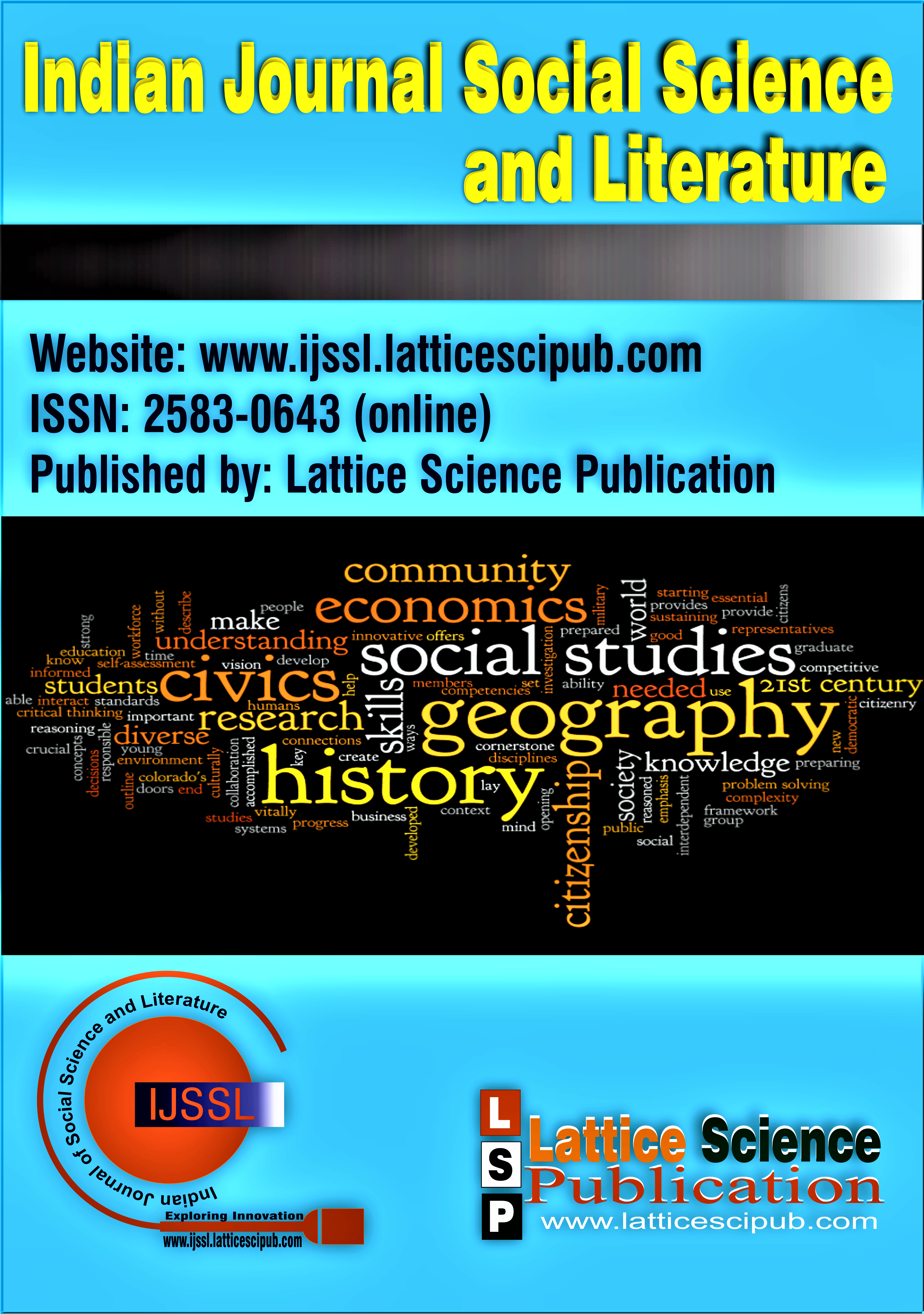Comparative Studies of German and Kuki Fairytales
Main Article Content
Abstract
This study attempts to analyze two different cultures of fairy tales—German fairy tales and Kuki tribal tales. Comparisons between the fairy tales of other countries and communities are valuable. Fairy tales, by their nature, celebrate diversity. By experiencing stories from different cultures, one can discover valuable insights into another culture’s values, beliefs, history, practices, and customs, which have been used in everyday life as communication, learning, and entertainment tools. They reveal the gap between truth and falsehood in our society. The study aims to extend folklore studies in Germany and India, particularly focusing on the “peripheral” literature from the Kuki community in the Northeastern region of India. It explores the similarities and differences in motifs, characters, mysticism, and various cultural connotations about both cultural groups. Since these two cultural groups are not historically related, a comparative study will be useful in understanding which motives are culturally determined and which are universal.
Downloads
Article Details

This work is licensed under a Creative Commons Attribution-NonCommercial-NoDerivatives 4.0 International License.
How to Cite
References
Ashliman, D.L, Folk and Fairytale, Chennai: Multivista Global, 2005, pp. 208 https://doi.org/10.5040/9798400652011
Bettelheim, Bruno, The Uses of Enchantment, New York: Vintage Books, 1976, pp. 301 https://doi.org/10.1080/00131727809336327
Blackburn, Stuart, Himalayan Tribal Tales, Leiden: Brill, 2008, pp. 205 https://doi.org/10.1017/s0021911810001294
Goswami, Tarun, Kuki Life and Lore, Haflong: North Cachar Hills District Council, 1985, pp. 311 https://doi.org/10.26515/rzsi/v101/i1-2/2003/159573
Haokip, Marykim, The Role of Oral Tradition with Special Reference to the Thadou-Kuki Society, Journal of North East India Studies Vol. 6(1), Jan.-Jun, 2016, pp. 62-75. Doi: https://doi.org/10.5281/zenodo.12780178
https://www.jneis.com/wp-content/uploads/2020/12/6.1.3.pdf
Kuki, Zamlhun. “Ngambom and Khupting: The evergreen Kuki love story,” 2004. Available at: https://kukiforum.wordpress.com/2004/08/17/ngambom-amp-khupting-the-evergreen-kuki-love-story/
Lüthi, Max, Märchen, 10 Aufl., Stuttgart: J.B.Metzler, 1962, pp. 51 https://doi.org/10.1007/978-3-476-99761-6
Propp, Vladimir, Morphology of the Folktale, 2nd ed., Trans. Laurence Scott. Austin: University of Texas Press, 1968, 31. https://web.mit.edu/allanmc/www/propp.pdf
Thompson, Stith, Motif-Index of Folk-Literature: A Classification of Narrative Elements in Folktales, Bloomington: Indiana University Press, 1955, 201 https://ia800301.us.archive.org/18/items/Thompson2016MotifIndex/Thompson_2016_Motif-Index.pdf





